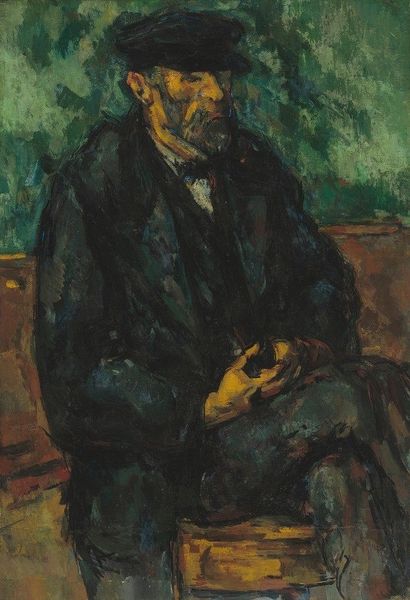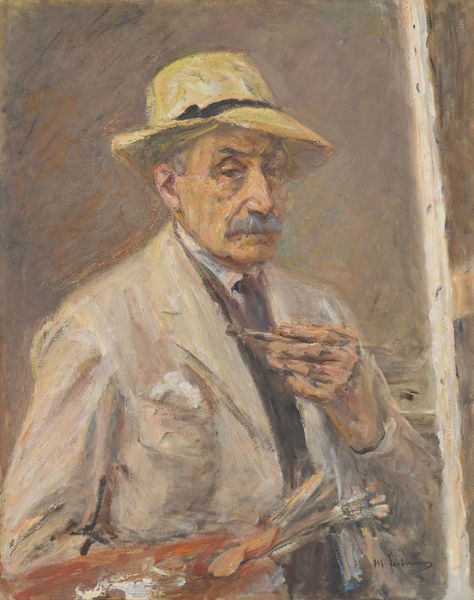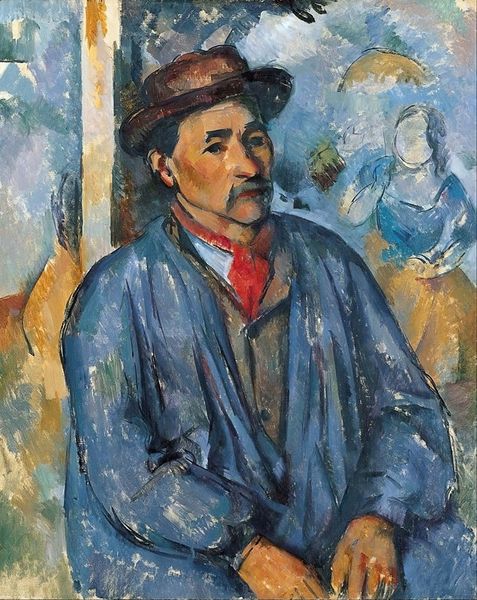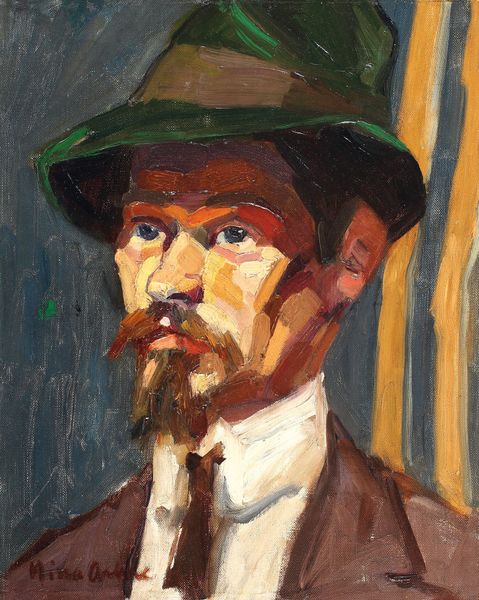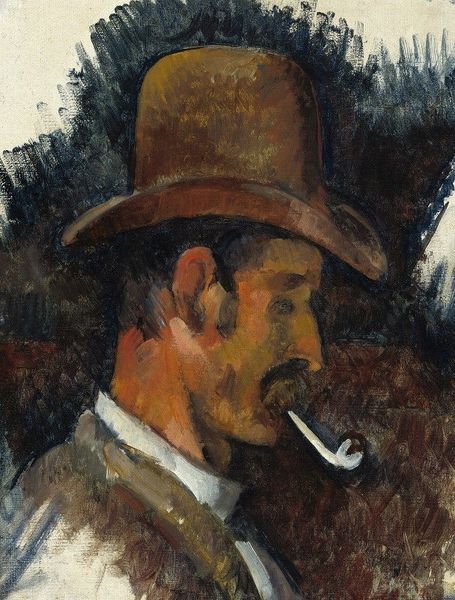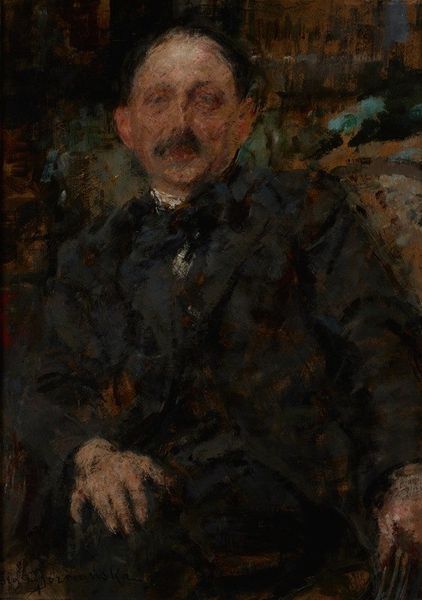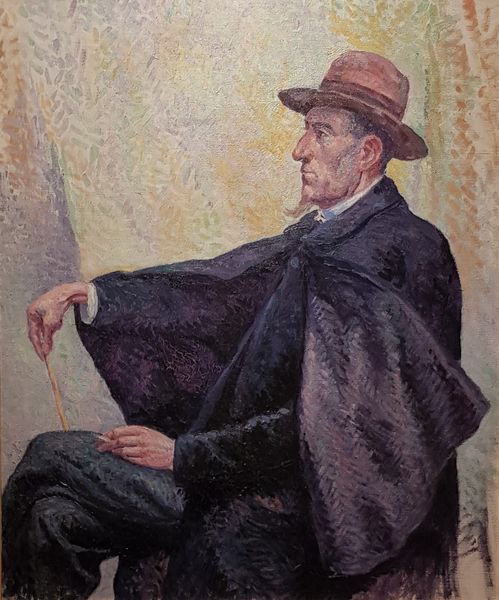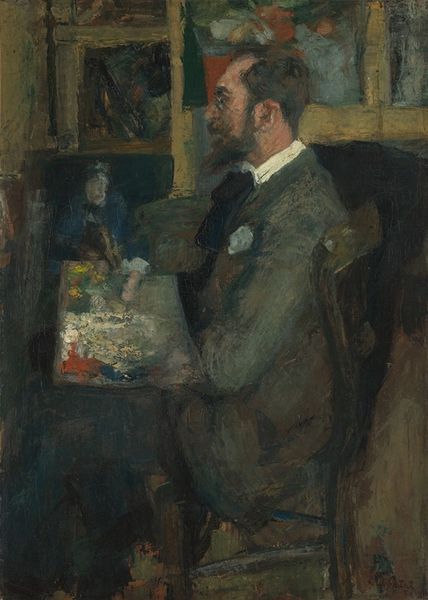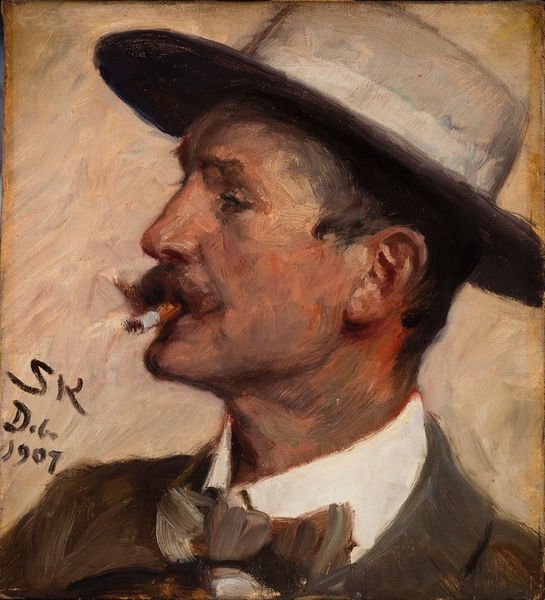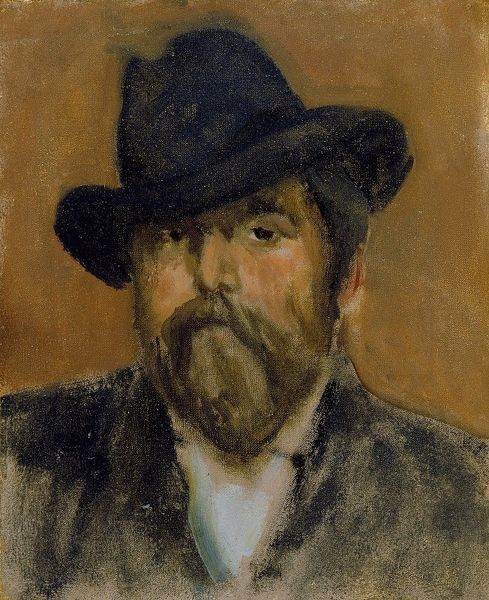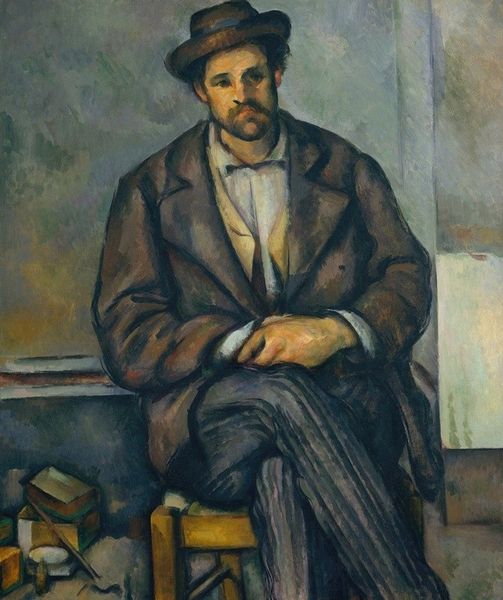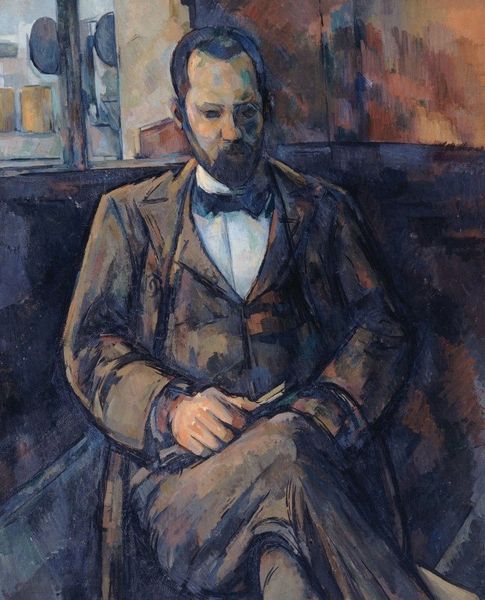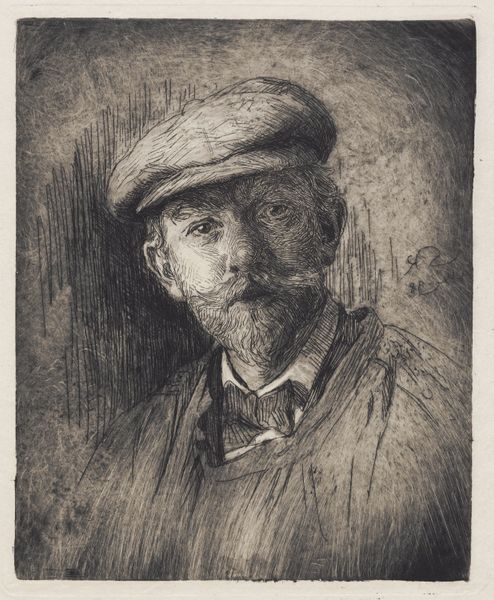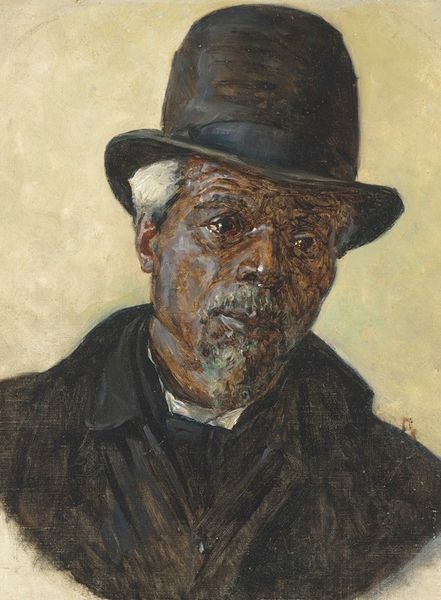
oil-paint
#
portrait
#
self-portrait
#
oil-paint
#
oil painting
#
expressionism
Copyright: Public Domain: Artvee
Curator: Let's discuss Lovis Corinth's Self-Portrait with Hat and Coat, painted in 1915. It's a powerful piece done in oil. What strikes you upon first viewing? Editor: The immediate impression is one of intensity, almost confrontation. The direct gaze and the rather somber palette create a sense of unease. He’s heavily bundled, which, given the date, brings the atmosphere of wartime into focus. Curator: Absolutely. Corinth painted this during a period of significant personal and global upheaval. His brushstrokes are energetic, bordering on frantic, a visual representation perhaps, of the turbulent socio-political climate. We should consider Expressionism, of course. Editor: Precisely. Note the symbols—the hat, casting shadows; the coat, a heavy burden perhaps signifying societal pressure and perhaps hinting at encroaching anxieties about mortality during wartime. His weary eyes speak volumes. Curator: And don't forget Corinth's position as an artist in Germany at this time. We have a generation grappling with the aftereffects of industrialization, colonial exploitation, and a deeply fractured social order all manifesting in their art. His self-representation isn't merely personal; it is a reflection of the modern subject. Editor: Right, the Symbolism operates on multiple layers, suggesting individual struggle, but reflecting back toward a broader crisis in cultural memory as traditional power structures crumbled. It would be interesting to trace its lineage alongside parallel self-portraits. Curator: Yes, within the Expressionist movement especially. We must interpret this not as isolated angst, but through lenses of gender and power relations. The "self" is always already mediated. Corinth actively positions himself amidst societal turmoil and redefines representation. Editor: I agree. Ultimately, the symbolic density offers an experience greater than just viewing another image. The emotional undercurrent makes the viewer confront not only Corinth but ourselves in relation to our symbols of the present time. Curator: His willingness to be unflinchingly honest about himself makes the artwork impactful even now. Editor: Indeed. A dark mirror reflecting the enduring tensions of identity and existence.
Comments
No comments
Be the first to comment and join the conversation on the ultimate creative platform.
